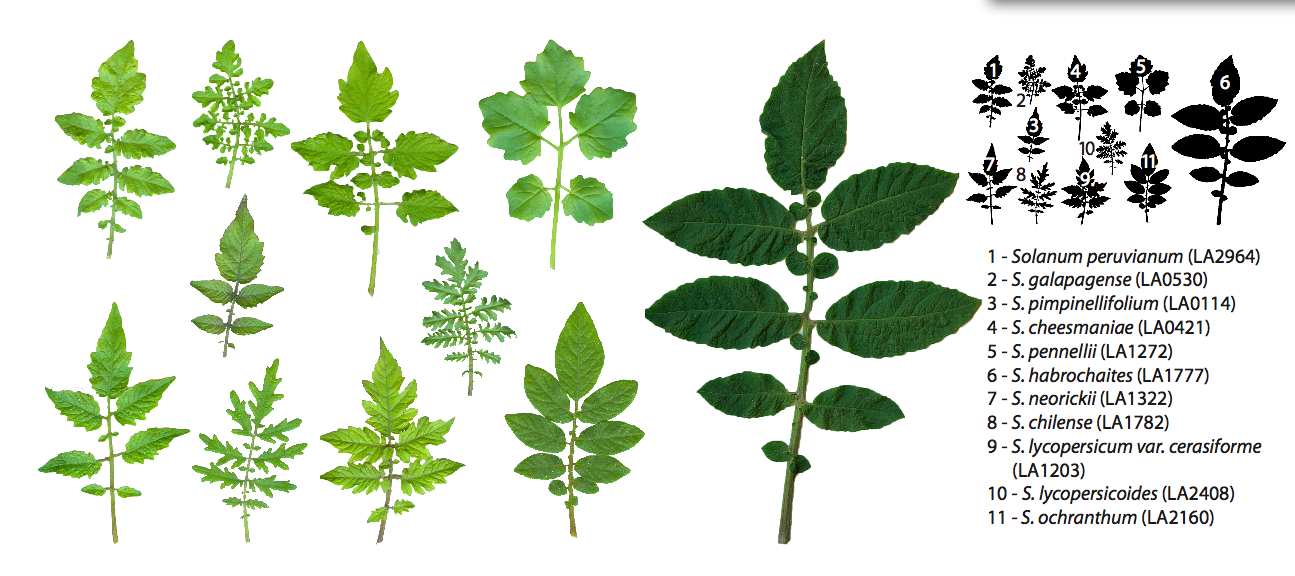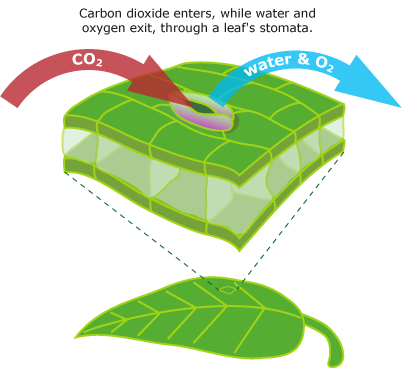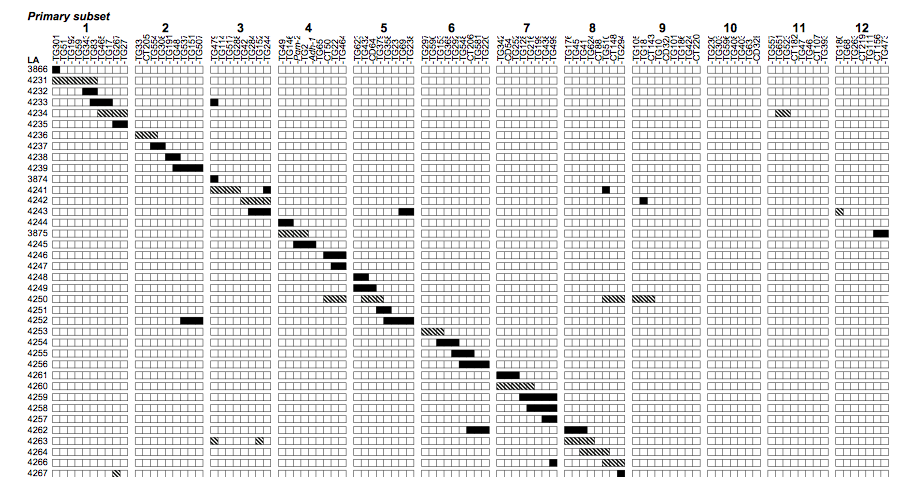By looking at differences that are found in domestic and wild tomato leaf DNA and traits, Dr. Chris Muir, from UBC Biodiversity Research Center, can confirm that the driving force behind all changes observed in physical traits are due to natural selection. Genetics account for various differences observed, and are responsible for making all organisms unique from one another. Naturally, some differences are more fitted for survival in the environment than others. Thus, some traits tend to dominate, and organisms with these traits have a higher survival rate. The video below examines the concept of natural selection:
Dr. Muir’s research builds on top of previous research experiments, as it uses genetic data collected by the Tomato Genetics Resource Center to determine where mutations lie. The Tomato Genetics Resource Center provides visualizations, which maps out where mutations are located. These images are known as introgression lines as pictured below. Each line is a different gene, and the shaded regions account for different types of mutations.
Determining which mutations are responsible for physical traits in the leaves is like doing a puzzle. Dr. Muir would look at which differences could be found in physical traits of the tomatoes, and where the mutations were in that particular tomato. If the same physical traits were constantly being altered, such as leaf thickness, and the same regions of genes were affected, the two are likely to be correlated.
Instead of focusing on the entire tomato, Dr. Muir focused on leaf traits. He looked at several different types of leaves, which physically looked quite different from one another.
- Image 2: Different variations of leaves in various types of tomatoes courtesy of Dr. Muir
The traits that were measured included leaf surface area and weight, as well as density and location of stomata and trichomes. Both stomata and trichomes appear to be rather complex terms, but they are merely scientific terms used to describe the pores and hairs, respectively, present on leaf surfaces. Both are responsible for regulating transpiration, leaf temperature, and other crucial cellular activities.
Although commonly overlooked, leaves are important to each plant’s survival. Leaves are responsible for growth stimulation of plants (Lam and Leopold 1966), and for photosynthesis – the harvest of energy. The size of the leaves, and the amount of stomata or trichome would influence the plants’ ability to survive in different environments.
Dr. Muir’s work was tedious, but rather simple. Using scanners, he measured the surface area, and using a scale, he measured the weight.

Image 3: Describing the Role of Stomata courtesy of Berkeley Education
He used an interesting application to examine the stomata and trichome. He applied clear nail polish, and look at the hardened impressions underneath the microscope.
The results were clear. Different types of tomatoes had distinct, unique traits that helped it to survive in the environment. Natural selection played a role in making these changes happen.
Dr. Muir’s work can be applied to many industries, and used in a variety of applications. To learn more, listen to the interview with Dr. Chris Muir below:
Audio clip: Adobe Flash Player (version 9 or above) is required to play this audio clip. Download the latest version here. You also need to have JavaScript enabled in your browser.
Science 300 Group 3 – Christy Kwok, Sophia Hu, Claire Curran, and Felix Tang
Literature Referenced:
Lam, S. and Leopold, A.C. 1966. Role of Leaves in Phototropism. Plant Physiology. 41:847-851
Moyle, L.C., Muir, C.D. and Pease, J.B. 2014. Quantitative genetic analysis indicates natural selection on leaf phenotypes across wild tomato species (Solanum sect. Lycopersicon; Solanaceae).


